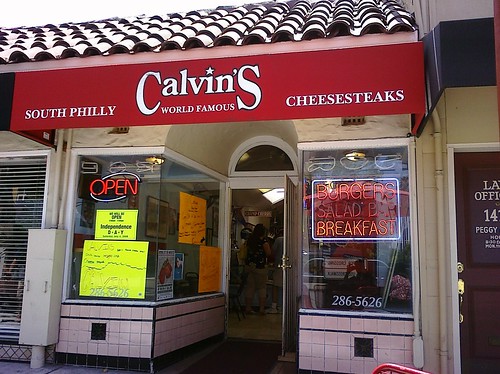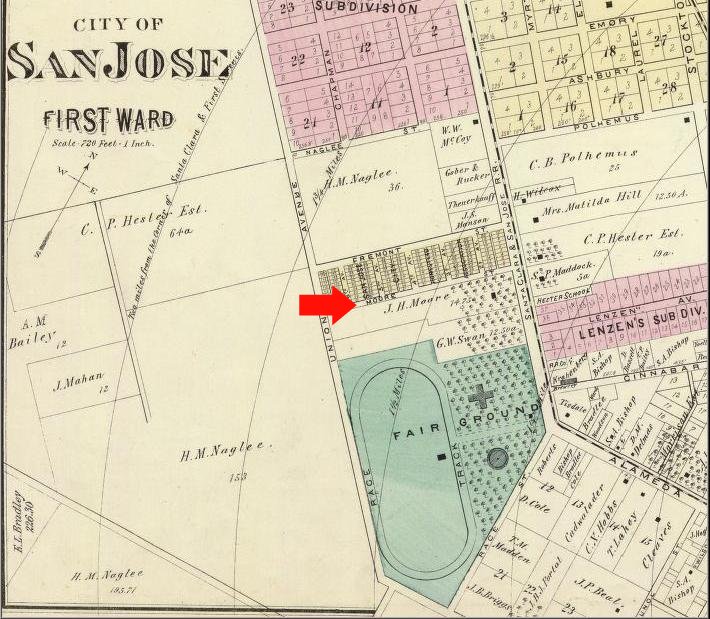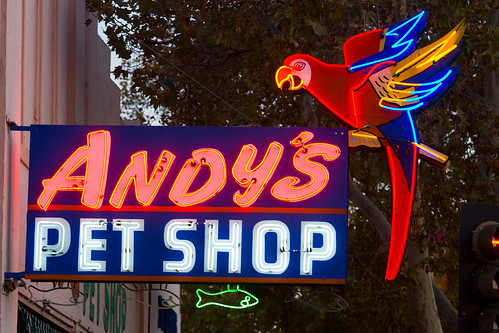
Whereas the 66 was a calm low-key ride, the 522 was a grittier urban experience. It was nearly full so I was lucky to find a seat near the back like I wanted, but it was on the driver’s side. I had wanted to sit on the passenger side so I could observe the east side of El Camino as we traveled north. I was going to be hard-core about this, ignoring everything on the left (west) side of the street, only looking at the right (east) side. I would catch the west side on the return trip. Great plan, right? For it to work I needed to be on the right side of the bus so I resolved to bide my time and switch seats as soon as one became available. Fortunately the view out the passenger-side windows was not too bad from across the aisle.
If you’ve ever seen the 522 bus you know how distinctive it is with the snazzy bright blue and red wrap covering the entire exterior, including the windows. Let me say that again…including the windows. It looks cool from the outside but from the inside looking out the view is horribly obscured by zillions of halftone screen dots. The world outside is low resolution, making it hard to see details and read street signsa poor choice for sightseeing. It was bad enough from the driver side but once I got my coveted window seat it was even worse because the dots were right in my face. I thought about opening a window but I didn’t want the chill and I suspect my fellow passengers wouldn’t have been too happy about it either. So I squinted and craned and made the best of it but it was far from ideal.

There was another problem with the 522: speed. A few seconds after I boarded the driver took off, literally leaving behind an old lady who was shuffling up the street, flagging him down. Passengers shouted for the driver to wait but he shouted back that he was late and that there were many 522s behind him. He’s right; the 522 runs every 15 minutes so I’m sure the little old lady was fine. But that was the start of a ride that can best be described as breakneck. The 522 hauls you-know-what up El Camino, pedal-to-the-metal from stop to stop. I have since learned that they even have sensors which cause traffic signals to change, like for emergency vehicles. All this efficiency is awesome for commuters but for a sightseer like me, not so much. I’m glad to have experienced it, but honestly the pixelated view of El Camino whizzing by the 522 at top speed wasn’t what I wanted. In retrospect I should have taken the VTA 22: same route, but a more relaxed schedule and clear windows. Next time.
Time : 12:40 PM
Place: Downtown San Jose
Route: VTA 522 Westbound
Fare: $0.00 w/day pass
Total: $6.00
I had my notebook out to write down things of interest. There was no way to capture everything on El Camino so I only jotted when something struck me. You would think a big old bus would be a pretty smooth ride but it turns out there’s a lot of motion which makes it difficult to write, so I tried my best. (My handwriting is not the most legible, even under ideal conditions.) I definitely wanted to be sure to record all the Historic El Camino Real bells I passed along the way. The first one was downtown San Jose near where Santa Clara Street crosses over the Guadalupe River. A little further up near HP Pavilion I could see the tents and tables in preparation for the Silicon Valley Turkey Trot the following day. The road was going to be closed on Thanksgiving Day so it’s lucky I didn’t get caught up in that. (Years ago I was not so lucky. I set out on a similar excursion to drive State Route 84 from end-to-end, Livermore to the Pacific Ocean, but after 70 miles in San Gregorio the road was closed so I never made it. D’oh!)
The bus continued onto The Alameda. I made a note of Downtown College Preparatory, the first high school we passed. Somehow I missed recording the El Camino bell there, but I did note the one a mere two blocks away at Singletary. These two bells are oddly close together.
Near the Santa Clara city limit I saw a gas station and decided to count all the gas stations we passed. There’s another bell near Santa Clara University‘s Loyola Hall. That’s where we left The Alameda and where El Camino Real in name begins. I made a note of the Roxio building because as a well-known CD and DVD burning software company they stand out as one of the few household-name high tech companies conspicuous on El Camino. This road is the backbone of Silicon Valley but for some reason the tech companies have shunned it. I saw a sign for Alviso St. which was puzzling until later I checked some maps that show that Alviso St., The Alameda, and El Camino Real all confusingly combine at Mission Santa Clara and shoot out Lafayette St. which in the 1800s was the main road from the mission to the all-important port city of Alviso.
As we passed under De La Cruz Avenue El Camino took on the commercial strip character that defines so much of its length through Santa Clara and San Mateo Counties: strip malls, parking lots, driveways, and low-slung cookie-cutter architecture. I decided to start tallying fast food chain stores, notching a Jack in the Box, KFC, and a Burger King before we got to the El Camino bell at the Santa Clara Civic Center. At Bowers we crossed over some water which I learned is Saratoga Creek. At some point we passed into Sunnyvale.
I say “at some point” because it turned out to be surprisingly difficult to tell where one city ends and the next begins. Sometimes there are posted signs but they are easy to miss through pixelated bus windows. I tried to keep track of city boundaries in my notes but mostly they were just guesstimates. I wrote down that the Lucky grocery store and a Blockbuster Video just past Lawrence Expressway were in Sunnyvale (deciding to count those as well as fast food joints and gas stations), but they’re actually in Santa Clara. Who knew?
Speaking of Blockbuster, that one was closing, and it was the second closing store I had seen so far. They were hard to miss as they each had a person standing outside waving bright “Store Closing” signs and the stores carried similar banners. This was the scoop of the day as I hadn’t realized this was happening. I thought maybe the whole company had gone out of business but it wasn’t quite that bad; still it was a major reduction. This shook me as we’ve recently had not one but two neighborhood Hollywood Video stores close on us. Evidently Blockbuster is faring no better in the face of withering entertainment competition from Netflix, digital television, and the internet. I paused to reflect how I had watched the videotape and DVD rental business grow from its earliest humble beginnings to being the go-to weekend entertainment option to being on life support in a couple short decades. We’re witnessing the end of an era.
On into Sunnyvale I tallied a Carl’s Jr., a Kragen auto parts store, Safeway, Subway, Togo’s, and my first of many Taco Bells. I smiled as I recalled many good times at Golfland. I noticed that at some point the name of the road had changed to “E. El Camino Real” which reminded me of a paradox I had noticed about El Camino years ago: that somehow a single monotonic contiguous road has North, South, East, and West variants. I resolved to confirm this conundrum, and confirm it I did.
It’s been years since I’ve been to Rooster T. Feathers comedy club but what always struck me was the long list of rules and regulations they have telling you what you can and can not do. My friend Dan told me an amazing story that it used to be called Andy Capps and is where Nolan Bushnell of Atari installed the first PONG coin-operated video game prototype, and hence could be considered the birthplace of the commercial video game industry.
I noted the newly opened Sunnyvale Art Gallery and made a plan to visit soon. (I have. More later.) It was coincidental to pass the elegant Grand Hotel because I had just recently watched for the first time the famous 1932 film of the same name featuring Greta “I Vant to Be Alone” Garbo and a star-studded cast. As we were nearing the end of Sunnyvale I realized I hadn’t spotted any bells yet in the city. Just then, we passed one at Mary. I observed a closed car dealership near Bernardo and my first McDonalds, then we were in Mountain View.
My first note was the Hotel Avante, followed shortly by the El Camino bell at State Route 85. We crossed over Stevens Creek and the Stevens Creek trail then passed Hotel Zico. There’s a tourism ad for Mountain View somewhere in there: “Need a place to stay? We have Hotels from Avante to Zico.” I spied a historical marker in front of BMW of Mountain View commemorating the “Site of Old Mountain View.” Nearby was a De Anza Trail marker at State Route 237. I imagine this crossroads was historically very significant since the road to Alviso and Milpitas was a crucial link to rest of the Bay Area before the railroads and bridges were built.
More Mountain View highlights include Amber Café, Indian Bits ‘n’ Bites and El Camino bells at Castro and at Rengstorff. By the way in these parts the road is called “W. El Camino Real.”At the San Antonio Transit Center I spotted my second The Offramp bicycle shop and the extensive Avalon Towers apartment complex. It’s always heartening to see high density housing near transit hubs and El Camino has its share. I noticed a pole-top wi-fi antenna, courtesy of Google, and a couple 24 Hour Fitnesses (48 Hour Fitness?) oddly co-located at the San Antonio Shopping Center. So long, Mountain View; hello Palo Alto.
Palo Alto Bowl made me wistful since it’s about to close after 55 years, to be replaced by a mixed-use hotel and townhouse complex. A little further up at Charleston there’s a brand new single-family housing development, Redwood Gate. I bagged a bell at Page Mill, nodded to the eminently strollable California Street, and wondered about the Ananda Church of Self-Realization at Stanford Avenue. Hits came hot-n-heavy: Palo Alto High School, a bell at Embarcadero, the now-booming Town & Country Village, and Palo Alto Medical Foundation. Shortly we turned off of El Camino into the Palo Alto Caltrain station, end of the line for the 522. It was 1:40 PM, exactly one hour after I boarded. We piled off the bus and I looked for my next connection.
Next installment…The Undiscovered County.
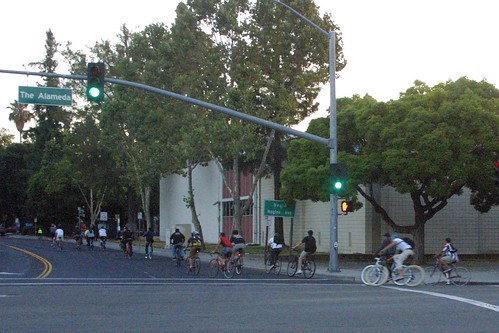 Redemption! Back in April I heard that San Jose Bike Party was rolling down El Camino Real through Mountain View and Sunnyvale so I jumped in my car to check it out and failed! Thousands of bicyclists, hooting and hollering, cruising down a five mile stretch of the most important road ever (IMHO), and I missed it. I read the route map carelessly so they looped right around me. Sad. But Friday night July 16, 2010 I had a second chance. Bike Party chose The Alameda for its monthly appearance and this time I…was…there!
Redemption! Back in April I heard that San Jose Bike Party was rolling down El Camino Real through Mountain View and Sunnyvale so I jumped in my car to check it out and failed! Thousands of bicyclists, hooting and hollering, cruising down a five mile stretch of the most important road ever (IMHO), and I missed it. I read the route map carelessly so they looped right around me. Sad. But Friday night July 16, 2010 I had a second chance. Bike Party chose The Alameda for its monthly appearance and this time I…was…there! The other incident was a case of unfortunate timing. Father Paul Locatelli, former chancellor and president of Santa Clara University, died on Monday, July 12, from pancreatic cancer. The university held an outdoor funeral Mass for him Friday on campus, at the same time the Bike Party commenced. I gather the festive and boisterous atmosphere of Bike Party regrettably interfered with the more solemn event. Mortifyingly, some truckers honked their airhorns in support of Bike Party as it rode past, probably unaware of the funeral nearby which was disrupted by the noise. I don’t know Fr. Locatelli but I’d like to think any university president would smile at the youthful exuberance of the riders; still that’s little comfort to the mourners who came to pay their respects to him that evening and had their ceremony disrupted.
The other incident was a case of unfortunate timing. Father Paul Locatelli, former chancellor and president of Santa Clara University, died on Monday, July 12, from pancreatic cancer. The university held an outdoor funeral Mass for him Friday on campus, at the same time the Bike Party commenced. I gather the festive and boisterous atmosphere of Bike Party regrettably interfered with the more solemn event. Mortifyingly, some truckers honked their airhorns in support of Bike Party as it rode past, probably unaware of the funeral nearby which was disrupted by the noise. I don’t know Fr. Locatelli but I’d like to think any university president would smile at the youthful exuberance of the riders; still that’s little comfort to the mourners who came to pay their respects to him that evening and had their ceremony disrupted.

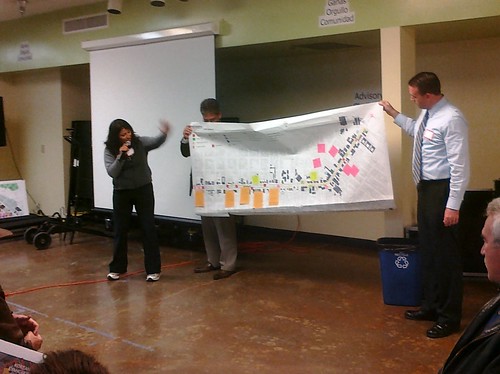
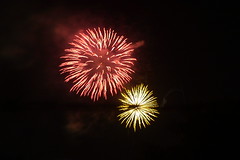

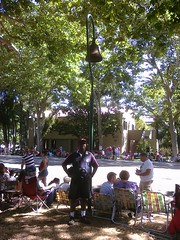
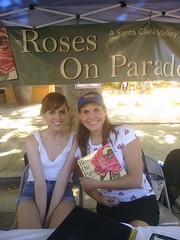
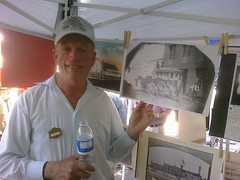



 Free Hot Dogs while supplies last!
Free Hot Dogs while supplies last! Introducing BBQ Sundays
Introducing BBQ Sundays